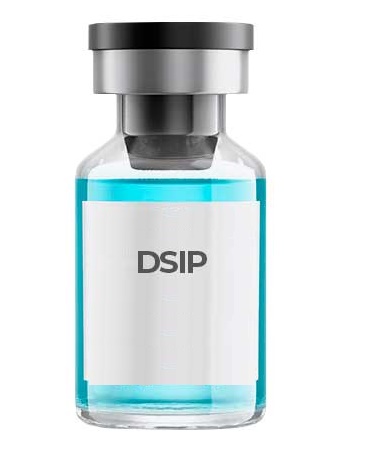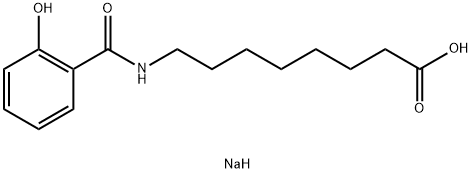Salcaprozate Sodium: Revolutionizing Oral Drug Delivery through Enhanced Gastrointestinal Absorption
May 15,2024
Introduction to Salcaprozate Sodium
Salcaprozate sodium, often referred to by its chemical name sodium N-(8-[2-hydroxybenzoyl]amino)caprylate, represents a pivotal advancement in pharmaceutical excipients. This compound is known for its remarkable ability to enhance the gastrointestinal absorption of various drugs, particularly peptides, and proteins that are typically challenging to deliver orally due to their size and sensitivity to digestive enzymes. Its utility extends across a range of therapeutic categories, including endocrinology and immunotherapy, where effective oral delivery can significantly improve patient compliance and overall therapeutic outcomes. Salcaprozate sodium's role in improving drug bioavailability is thus a breakthrough in oral drug delivery technology[1].

Figure 1 Characteristics of Salcaprozate Sodium
Synthesis of Salcaprozate Sodium
The synthesis of salcaprozate sodium involves a multi-step chemical process that begins with the reaction of 2-hydroxybenzoyl chloride with octylamine to form 2-hydroxybenzamide. This intermediate is then reacted with bromoacetic acid to introduce a carboxylic acid group, which is subsequently neutralized with sodium hydroxide to yield salcaprozate sodium. This synthesis process is notable for its efficiency and the high purity of the final product. Each step of the synthesis is carefully controlled to optimize yield and ensure the integrity of the molecular structure. The process also includes stringent purification steps to eliminate any impurities and by-products, which is critical for achieving the high standards required for pharmaceutical applications. Additionally, the reaction conditions, such as temperature and pH, are meticulously managed to ensure that the final product meets the exact specifications necessary for medical use. This rigorous attention to detail in the synthesis process underscores the compound's reliability and effectiveness as a pharmaceutical excipient.
Main Components
Salcaprozate sodium is primarily composed of a sodium salt and a hydroxybenzoyl group linked to an octylamine chain. The octylamine chain is crucial as it facilitates the penetration of the intestinal mucosa, while the hydroxybenzoyl group enhances solubility and stability, making the molecule an effective enhancer of drug absorption. The specific structure of salcaprozate sodium allows it to interact effectively with the lipid bilayers of the intestinal cells, promoting a smoother and more efficient transport of the drug molecules across the cellular barriers. Furthermore, the hydroxybenzoyl component not only improves the solubility of the compound but also provides a degree of protection against enzymatic degradation within the gastrointestinal tract. This dual functionality makes salcaprozate sodium uniquely effective in overcoming the common hurdles faced in oral drug delivery, particularly for biologically active peptides and proteins that require careful handling to retain their therapeutic efficacy.
Applications of Salcaprozate Sodium
The primary application of salcaprozate sodium lies in its role as an absorption enhancer in oral pharmaceutical formulations. It is particularly effective in increasing the bioavailability of biologically active peptides, which are otherwise degraded in the gastrointestinal tract before they can be absorbed. Salcaprozate sodium has been used in clinical trials to enhance the oral bioavailability of insulin, growth hormones, and various vaccines, demonstrating its potential to significantly impact the delivery of biopharmaceuticals.
Storage Methods
Proper storage of salcaprozate sodium is essential to maintain its chemical integrity and efficacy. The compound should be stored in a cool, dry place away from light. It is hygroscopic, meaning it can absorb moisture from the air, which may lead to degradation or a change in its physical properties. Thus, it should be kept in tightly sealed containers to minimize exposure to air and moisture.
Conclusion
Salcaprozate sodium is a groundbreaking compound in the field of drug delivery, offering new possibilities for the oral administration of peptides and proteins that were previously limited to invasive routes of administration. Its synthesis, while straightforward, requires precise control over reaction conditions to ensure the production of a high-quality product. As research continues, the potential applications of salcaprozate sodium are likely to expand, further solidifying its role in modern pharmaceutical sciences. This compound not only exemplifies the innovative fusion of chemistry and pharmacology but also highlights the ongoing advancements in drug delivery technologies[2].
References
[1]Twarog C, Fattah S, Heade J, et al. Intestinal permeation enhancers for oral delivery of macromolecules: a comparison between salcaprozate sodium (SNAC) and sodium caprate (C10)[J]. Pharmaceutics, 2019, 11(2): 78.
[2]Riley M G I, Castelli M C, Paehler E A. Subchronic oral toxicity of salcaprozate sodium (SNAC) in Sprague-Dawley and Wistar rats[J]. International journal of toxicology, 2009, 28(4): 278-293.
- Related articles
- Related Qustion
- Salcaprozate Sodium: Uses, Side Effects and Related Research Mar 15, 2024
Salcaprozate Sodium (SNAC) is a synthetic N-acetylated amino acid derivative of salicylic acid widely used as a carrier for orally administered drugs.
- Salcaprozate Sodium Facilitates Oral Delivery of Low-Permeability Drugs Jan 3, 2024
Salcaprozate sodium enhances API absorption, potentially improving drug efficacy and bioavailability. Extensively studied in oral formulations, it is deemed safe by the FDA.
- Synthesis and Application of Salcaprozate sodium Nov 15, 2022
Salcaprozate sodium (SNAC) is an oral absorption enhancer that has potential as a delivery agent for heparin and insulin in oral forms.
Supplementation with pyridoxal 5'-phosphate monohydrate can synthesize neurotransmitters such as dopamine and serotonin, maintaining a healthy nervous system.....
Nov 4,2025Biochemical EngineeringHowever, like any peptide, DSIP has a few potential side effects. These may include headaches, dizziness, and gastrointestinal issues like nausea or stomach pain.....
May 15,2024Biochemical EngineeringSalcaprozate Sodium
203787-91-1You may like
Salcaprozate Sodium manufacturers
- sodium,8-[(2-hydroxybenzoyl)amino]octanoate
-
![203787-91-1 sodium,8-[(2-hydroxybenzoyl)amino]octanoate](/ProductImageEN1/2025-04/Small/b791041d-7b5d-4cdf-9a0a-65b0c81428bf.gif)
- 2025-12-12
- CAS:203787-91-1
- Min. Order:
- Purity: 0.99
- Supply Ability:
- Salcaprozate Sodium
-

- $5.00/ KG
- 2025-12-12
- CAS:203787-91-1
- Min. Order: 1KG
- Purity: 99% hplc
- Supply Ability: 500TONS
- sodium,8-[(2-hydroxybenzoyl)amino]octanoate
-
![203787-91-1 sodium,8-[(2-hydroxybenzoyl)amino]octanoate](/ProductImageEN/2024-06/Small/45be5fff-d18f-4610-80e7-f65de2327a05.jpg)
- $0.00 / 1g
- 2025-12-12
- CAS:203787-91-1
- Min. Order: 1g
- Purity: 99.5%
- Supply Ability: 100kg/month






